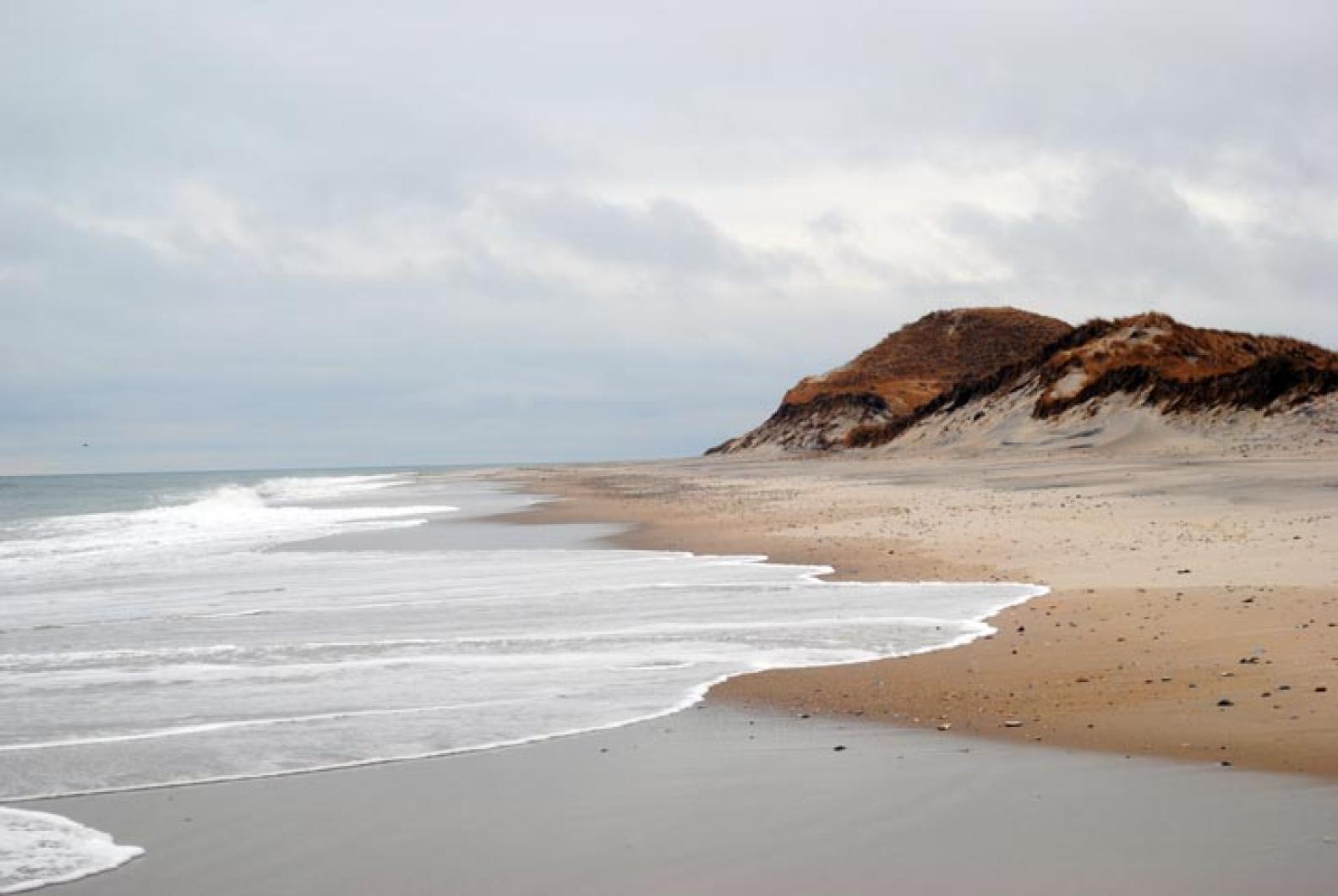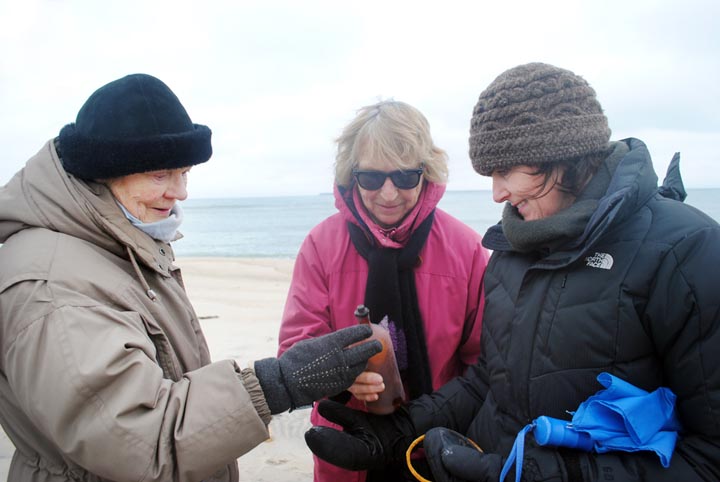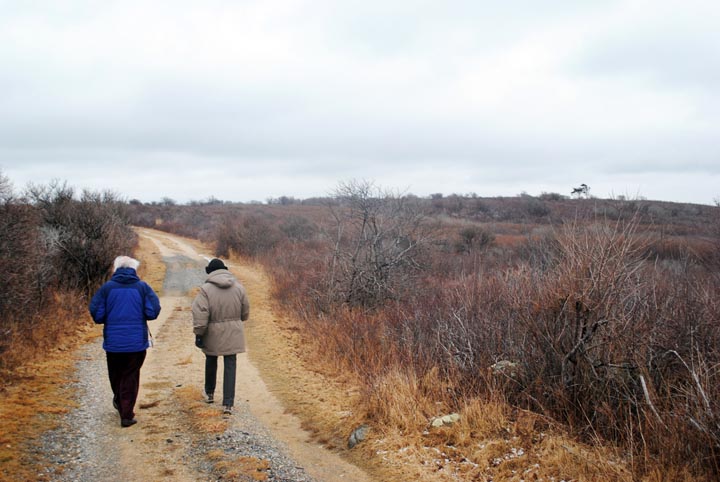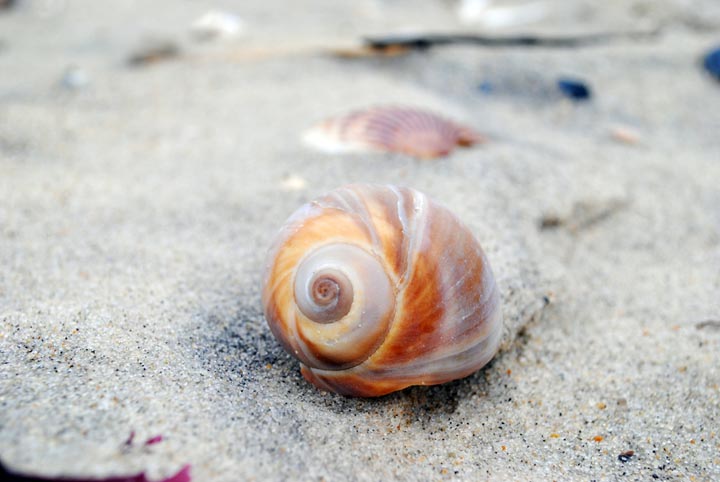Passing through the second electronic security-armed gate on the way to Squibnocket it begins to dawn on you: This place is important.
“I think you’re going to love it if you haven’t been here before,” said Trustees of Reservations guide Sarah Trudel on Saturday. Once a year, for two hours, 140 acres of unspoiled — and quintessentially Vineyard — wilderness opens to the general public when the Squibnocket Associates open their gates for a public walk. This past Saturday the Trustees led the annual walk on an overcast day that did little to mask the beauty of the place.
Past the gates and perpendicular to the rutted roads are the trampled byways of deer runs, the entryways marked with piles of pellets and denuded scrub oak, stripped by the agitated abrasions of male deer rubbing their velvety antlers on the salt-blasted trees that grow diagonally like wild bonsai. All around is a watercolor palette that ranges from gray to tawny brown.
“I always wonder how deer eat this all winter,” Ms. Trudel says, picking at a bare twig.
The road leads eventually past an otter-colonized kettle pond to the spectacular Squibnocket dunes, propped up by ages of wind and scaffolded by beach grass roots untouched by human trampling. At this time of year the vegetation takes on a lustrous khaki sheen — some dunes roll like hunchbacked golden retrievers while others loom imposingly before the beach like forgotten megaliths.
“This is what dunes are supposed to look like,” said Trustees Vineyard superintendent Chris Kennedy. “Dunes have been loved to death by human beings. When we create pathways up and over them all of a sudden the beach grass is killed the wind begins to blow through that little narrow pathway. Before you know it the dune starts to change its shape.”
South Beach, Wasque and even Lambert’s Cove Beach, Mr. Kennedy claims, would have the majestic dunes of Squibnocket without human intervention.
Over and between the dunes is the continually changing beach.
“There’s a constant movement of sand and rocks,” Ms. Trudel says. “We never know what the beach will look like when we come down here.”
Today it is a wide ribbon of sand strewn with lobster claws, whole surf clams and unshucked oysters. Thousands of eiders, scoters, buffleheads and even the occasional preening loon bob blithely offshore. Onshore, tour participant Sally Segall finds a browned medicine bottle plugged with a rubber stopper, similar to the one Ms. Trudel says she discovered some years ago on the same beach from a class in Connecticut, a wayward missive sent on its searching mission as part of the class’s sea current curriculum.
Walking the beach, tour participants step lightly, as underfoot the only viable population in the world of northeast beach tiger beetle lives in the wrack line of this narrow stretch. Great swarms of the plucky beetle all along the Atlantic seaboard have been reduced to a few thousand individuals at Squibnocket after decades of increased human beach use, especially by oversand vehicles which send the bug scrambling to rebuild its homestead, exhausting it.
According to the Massachusetts Division of Fisheries and Wildlife one severe summer storm or early season hurricane could drive the beetle to extinction.
As the two-hour window into the pristine landscape quickly closes, the walkers are rounded up to be shuttled back through the two gates to the main parking lot. Walking back to the vans, the group passes windblown clusters of endangered Nantucket shadbush, protected in perpetuity by the conservation restriction on this land. Ms. Trudel asks for comments about the excursion.
“Let’s get more than one day a year!” exclaims landscape artist Liz Taft.











Comments
Comment policy »